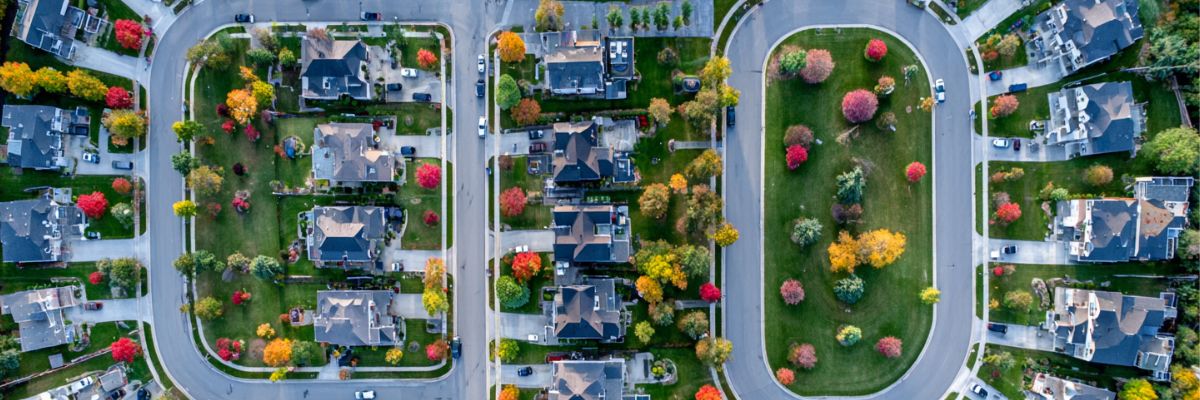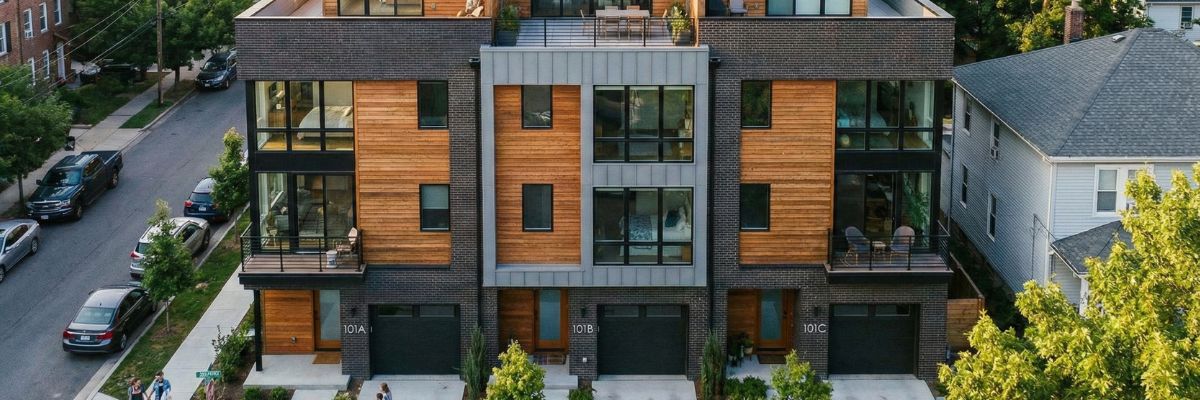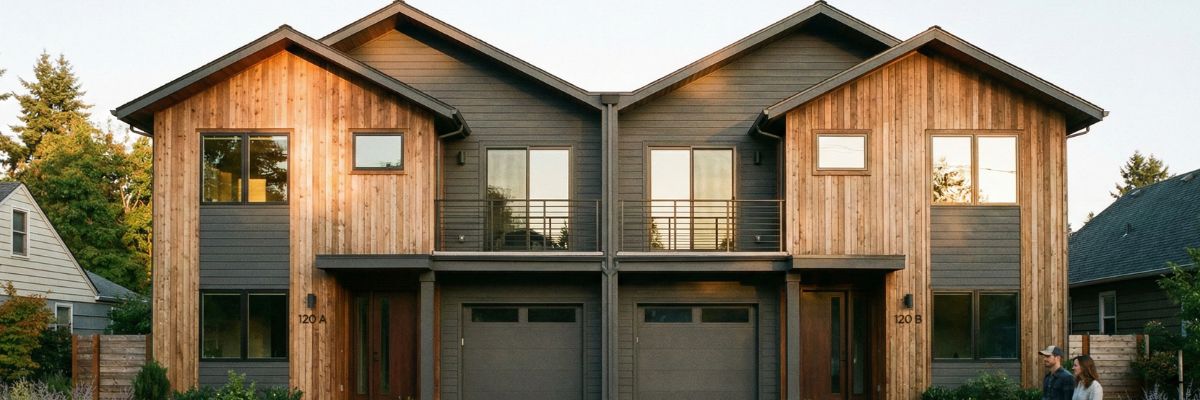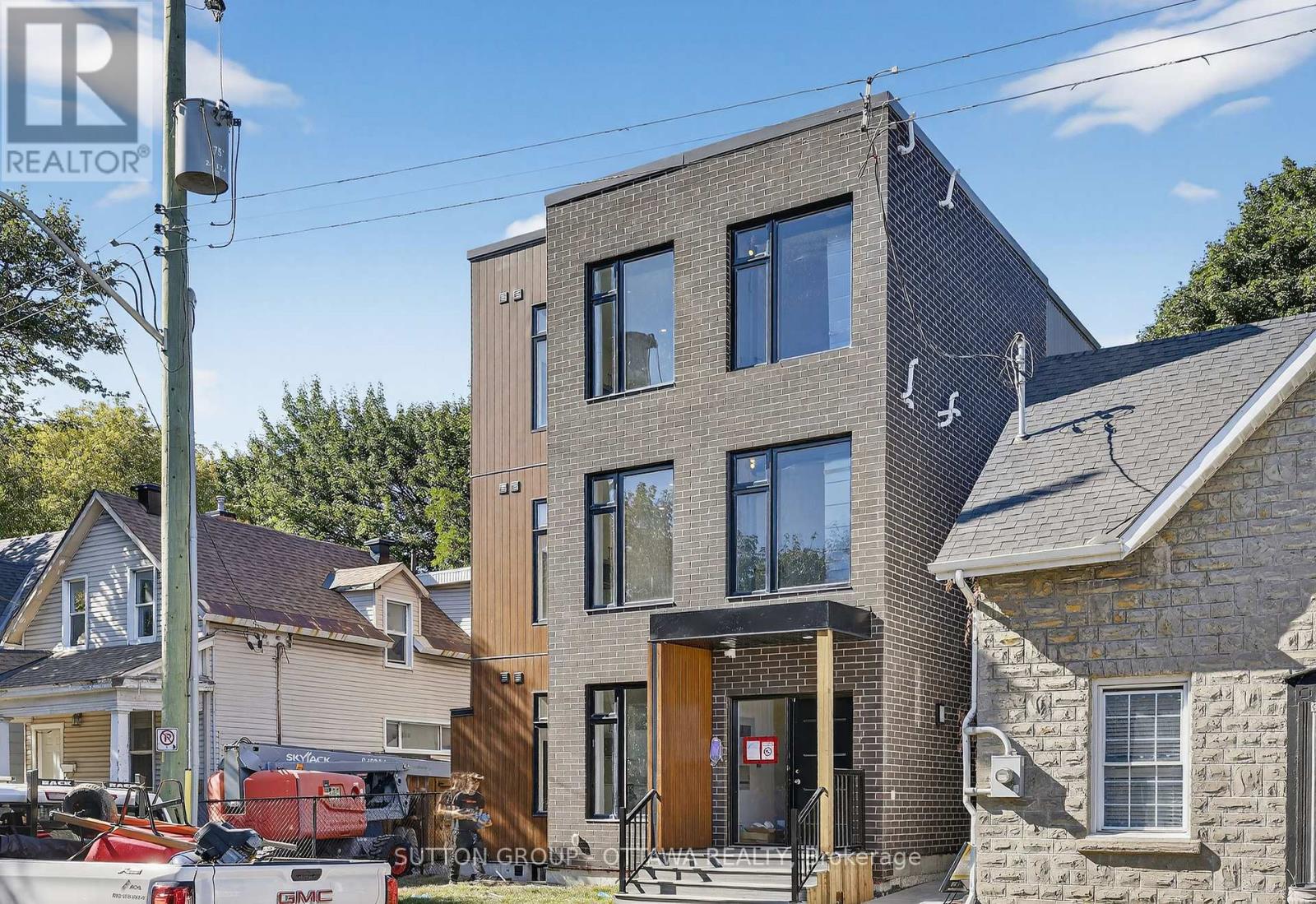What Is a Production Home Builder?
A production home builder is a company that constructs large numbers of houses each year using standardized floor plans, materials, and construction methods, giving buyers an efficient, affordable, and predictable path to homeownership in master planned or subdivision communities.
Unlike custom builders who design each home from scratch or spec builders who construct one off homes for broad market appeal, production builders rely on repetition, scale, and controlled options to keep costs low, timelines short, and the buyer experience streamlined. Understanding how production builders operate, what buyers can and cannot customize, and where they fit compared to other building models helps buyers decide whether this approach aligns with their priorities, budget, and lifestyle needs.

What Defines a Production Home Builder?
A production home builder focuses on building homes at scale, often completing hundreds or thousands of units each year within master planned communities. These companies purchase or develop large tracts of land, plan neighborhood layouts in advance, and create architectural guidelines that ensure consistency from home to home. Instead of designing a new plan for each buyer, they use a curated set of repeatable floor plans that have been engineered to build efficiently, cost effectively, and reliably.
Building Homes Based on a Standardized Plan Library
Production builders work from a catalog of tested floor plans that can be repeated across an entire community. These plans are engineered for efficiency, meaning framing details, mechanical layouts, and structural components remain consistent from build to build. This eliminates the rework and unpredictability that often comes with custom design. By repeating plans across many lots, the builder can forecast material needs, streamline construction schedules, and negotiate stronger pricing from suppliers and trades.
Subdivisions Designed for Efficiency and Cohesion
Instead of building on scattered, one off lots, production builders typically control the entire community or large sections of it. This allows them to design roads, lot shapes, architectural themes, and amenity areas with consistency. Exterior styles are controlled through preset elevation choices selected to maintain a cohesive look throughout the neighborhood. Buyers still get to choose between exterior variations, but the streetscape remains balanced and visually aligned.
How Production Builders Operate
Production builders rely on a highly systematized approach that allows them to build homes faster and more affordably than custom builders. Their operational structure is based on repetition, predictable sequencing, and preplanned material selections.
Standardized Construction Processes
The same framing details, roof structures, material SKUs, trade partners, and construction steps are repeated across dozens or hundreds of homes. Because the process does not change dramatically from lot to lot, the builder’s trades become extremely efficient in their roles. Electricians, plumbers, framers, and finish crews follow predictable workflows, reducing time on site and minimizing errors. This also allows construction managers to oversee multiple homes at once, scaling their oversight while maintaining consistent quality.
Buyer Options Presented Within a Controlled System
Buyers selecting a production home typically begin by choosing a floor plan and elevation from the builder’s catalog. After signing a contract, they visit the builder’s design center to choose finishes within preset lines. Options usually include flooring, cabinetry, countertops, plumbing fixtures, lighting, and paint colors. Instead of open ended choices, buyers select from curated packages such as standard, upgraded, or luxury tiers. These choices are prepriced and engineered to fit the builder’s construction workflow, avoiding cost overruns or delays.
What Buyers Can Customize in a Production Home
Production homes offer a blend of personalization and efficiency. Buyers can influence the appearance of their home but must work within the builder’s approved list of structural and cosmetic options.
Customization Buyers Typically Can Make
Most production builders allow buyers to choose the floor plan from a limited catalog. Some plans offer structural variations such as converting a loft to a bedroom, adding a bonus room, expanding the garage, or choosing between different kitchen layouts. Buyers can also customize finishes such as cabinetry color, countertop material, appliance packages, flooring type, and plumbing or lighting fixtures. These selections are all made from preapproved products that fit the builder’s construction standards.
Limitations Buyers Should Expect
Buyers cannot move structural walls, rearrange entire floor plans, or redesign window placements beyond the options listed in the builder’s catalog. Mechanical systems, plumbing locations, and overall home footprint must remain as designed. Exterior massing is also restricted to maintain community cohesion, meaning homeowners select from a limited number of approved elevations rather than designing their own facade. These limitations keep the building process efficient and ensure homes can be constructed on a predictable schedule.
Advantages of Working With a Production Home Builder
Production builders offer several advantages that appeal to a wide range of buyers, especially those who prioritize affordability, speed, and a simplified decision making experience.
Lower Cost Per Square Foot
Because production builders purchase materials in bulk, repeat plans consistently, and maintain long term relationships with trade partners, they can build at a lower cost per square foot than most custom builders. Their standardization reduces waste, increases efficiency, and allows savings to be passed on to the buyer. This makes production homes an attractive option for first time buyers or families seeking value without sacrificing new construction.
Faster Construction Timelines
Production homes generally finish far faster than custom homes because the plans are preengineered, the materials are stocked, and the construction sequence is optimized. Builders often run multiple homes in parallel, keeping trades on a reliable schedule and reducing downtime between phases. For buyers, this means they can move in sooner without navigating the unpredictable timeline of a bespoke home design.
Predictable Pricing and Process
One of the largest benefits for buyers is predictability. Base prices, option costs, and build times are clearly defined. Because the builder has executed the same plans many times, surprises are rare. Buyers face far fewer decisions than in a custom build, reducing stress and eliminating the overwhelming number of choices that come with designing a home from scratch.
Trade Offs and Limitations of Production Builders
While production homes offer many advantages, they also come with limitations that some buyers may find restrictive.
Less Design Flexibility
Buyers expecting to customize structural elements may be disappointed. Production homes cannot be altered beyond the approved list of structural options. Unusual rooms, dramatic layout shifts, or specialized spaces typically cannot be added. This is ideal for buyers who want simplicity but less suitable for those with highly specific needs.
Homogeneous Communities
Because many homes share similar designs, production subdivisions can feel repetitive. While some buyers appreciate the uniformity for resale and neighborhood identity, others prefer the character and uniqueness found in custom or infill builds.
Specification Levels Vary by Price Point
Production builders usually build to meet the expectations of the targeted price range. While the homes are code compliant, they may not include the advanced building science, soundproofing, or high performance features that custom builders emphasize, especially in luxury markets.
How Production Builders Compare With Spec and Custom Builders
Understanding how production builders differ from spec and custom builders can help buyers choose the right approach.
Versus Spec Builders
Both production and spec builders construct homes without a committed buyer, but production builders do so at a much larger scale using a stable catalog of plans in planned communities. Spec builders often work on individual lots or small clusters with more variation in designs and finish packages.
Versus Custom Builders
Custom builders begin with the client’s vision and adapt the design to the lot and lifestyle needs. Production builders begin with their own plan library and community standards, allowing customization only within predetermined limits. Buyers who want full control over architecture, layout, and materials are better suited for a custom build.

.svg)





.jpg)
.jpg)



